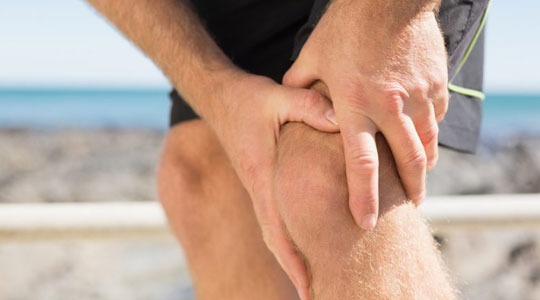Arthroscopic ACL reconstruction

Introduction
The anterior cruciate ligament is one of the most important stabilizing ligaments in the knee. It is a structure located in the center of the knee running from the femur to the tibia. When this ligament gets torn, it doesn’t heal and usually leads to the feeling of instability in the knee. ACL reconstruction is a commonly performed surgical procedure and with recent advances in arthroscopic surgery can now be performed with minimal incisions and low complication rates.
Function
The ACL is the major stabilizing ligaments in the knee. It prevents the tibia moving abnormally on the femur. When this abnormal movement occurs it is referred to as instability and the patient is aware this abnormal movement. Often other structures such as the meniscus, the articular cartilage or other ligaments can also be damaged at the same time as a cruciate injury & these may need to be addressed at the time of surgery.
History of Injury
- Most injuries are due to sudden twisting of the knee
- It can occurs with a sudden change of direction, a direct blow
- Often there is a popping sound when the ligament ruptures
- Swelling usually occurs immediately
- There is often the feeling of the knee popping out of joint
- It is difficult to be able to continue playing sport with the initial injury
Once the initial injury settles down the main symptom is instability or giving away of the knee. This usually occurs with running activities but can occur on simple walking or other activities of daily living.
Diagnosis
The diagnoses can often be made on the history alone.
Examination reveals instability of the knee. An MRI (Magnetic Resonance Imaging) can be helpful if there is doubt as well as to look for damage to other structures within the knee. At times the final diagnoses can only be made with an Arthroscopy.
Treatment (Immediately after injury)
- Rest
- Ice
- Elevation
- Bandage
Long term
Not everyone needs surgery. Some people can compensate for the injured ligament with physiotherapy i.e. strengthening exercises or a brace. It is strongly advised to give up sports involving twisting activities, if you have an ACL injury. Episodes of instability can cause further damage to important structures within the knee that may result in early arthritis
Indications for surgery
Young patients wishing to maintain an active lifestyle. Sports involving twisting activities e.g., Soccer, netball, football It is advisable to have physiotherapy prior to surgery to regain motion and strengthen the muscles as much as possible.
Surgery
The surgery is performed arthroscopically i.e.by key hole surgery. The ruptured ligament is removed and then tunnels (holes) in the bone are drilled to accept the new graft. This graft which replaces your old ACL is taken either from the hamstring tendon or the patella tendon. The graft is prepared to take the form of a new tendon and passed through the drill holes in the bone.
The new tendon is then fixed into the bone with various devices to hold it into place while the ligament heals into the bone (usually 6 months).
The rest of the knee can be clearly visualized at the same time and any other damage is dealt with e.g., meniscal tears.
The wounds then closed and a dressing applied.
A splint is used for comfort.
Post surgery
You will be seen by a physiotherapist who will teach you to use crutches and show you some simple exercises.
You can put partial or full weight on your leg.
Put ice on the knee for 20 minutes at a time, as frequently as possible.
Discharges from hospital is possible within 2-3 days.
Rehabilitation
Physiotherapy is an important part of the treatment and is recommended to start as early as possible. Preoperative physiotherapy is helpful to better prepare the knee for surgery. The early aim is to regain range of motion, reduce swelling and achieve full weight bearing.
The remaining rehabilitation will be supervised by a physiotherapist and will involve activities such as knee bending, proprioceptive exercises and muscle strengthening. Cycling can begin at 2 months, jogging can generally begin at around 3 months. The graft is strong enough to allow sport at around 6 months however other factors come into play such as confidence, fitness and adequate fitness and training.
The rehabilitation and overall success of the procedure can be affected by associated injuries to the knee such as damage to meniscus, articular cartilage or other ligaments. The more detailed rehabilitation protocol is individualized for patients by our team of physiotherapists under the supervision of Dr. Chhallani.
Summary
Anterior Cruciate Ligament reconstruction is a common and very successful procedure. In the hands of experienced surgeons who perform a lot of these procedures 95% of people have a successful result. It is generally recommended in the patient wishing to return to an active lifestyle especially those wishing to play sports involving running and twisting.
The above information hopefully has educated you on the choices available to you, the procedure and the risks involved. If you have any further questions you should consult with your surgeon.
